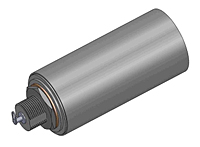Captor Delivers- Standard filters at minimum cost
- Fastest shipments in the filter industry
- Custom or standard designs to your specifications
- Prompt attention to problem-solving prototypes
Performance CharacteristicsRating: Filters are designed for continuous operation at rated current and voltage. Operating temperature range is -55º C to +125º C. AC filters may be operated at power frequencies up to 400 Hz.
Terminal Style: All filters rated at 10 amps or less have solder type terminals; those rated above 10 amps have stud-type terminals.
Temperature Rise: The case temperature rise shall not exceed 25º C when operated at rated current, voltage, and line frequency.
Dielectric Test: Filters shall withstand the over-voltage dielectric test specified by MIL-PRF-15733 as applicable.
Insulation Resistance: The insulation resistance of these filters shall be in accordance with MIL-PRF-15733.
Voltage Drop: The voltage drop shall not exceed 1 % of rated voltage when the filter is carrying the specified rated current. AC filter voltage drop shall be measured at unity power factor.
Insertion Loss: The loss shown at 0.15 MHz is conservatively rated and is in accordance with MIL-STD-220. Additional data on request.
Terminal Strength: Terminals shall pass the requirements of MIL-PRF-15733.




